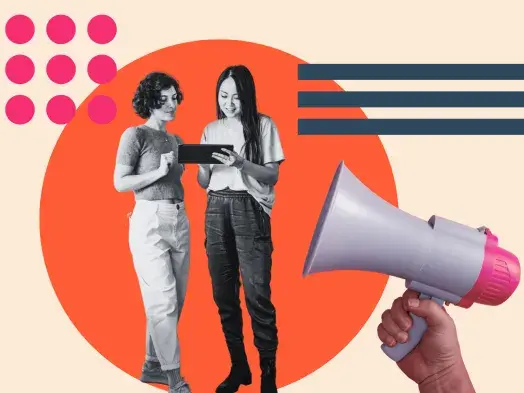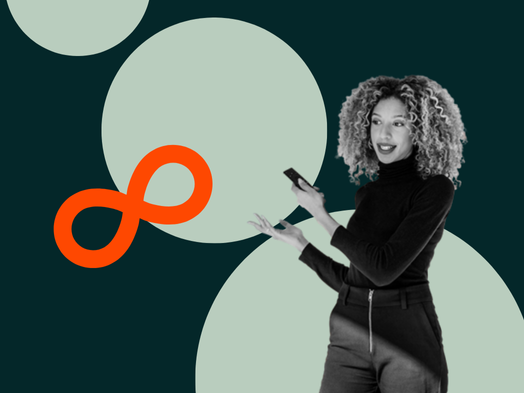Personalized experiences are becoming increasingly important to customers — and marketers are listening. Just look at Imañya James, a product and marketing specialist for the widely regarded skincare brand Topicals.
She’s appeared in many of the brand’s campaigns herself, demonstrating first-hand how products work, sharing recommendations, progression photos, and usage tips.
![Download Now: Free State of Marketing Report [Updated for 2025]](https://no-cache.hubspot.com/cta/default/53/b0f73a5e-16e4-41fd-9511-8564efc560a7.png)
I’m increasingly impressed by how Topicals creates these kinds of opportunities for customers to feel catered to, seen, and understood. Recent case in point: The brand quickly addressed feedback about the scent of its Faded serum.
If you’re just getting started with your digital marketing strategy — or just want to learn more about how to start a personalization strategy — you’re in the right place.
Table of Contents
What is personalization in marketing?
Are you one of the millions of users who download and post your Spotify Unwrapped every year? That right there is personalized marketing — a strategy that entails custom and individualized curations of messages, content, products, or experiences for customers.
In a Boston Consulting Group (BCG) survey of 5,000 global consumers, more than 80% of respondents say they both want and expect personalized experiences.
Some common examples of personalized marketing include:
- Exclusive email campaigns.
- Customer loyalty programs.
- Birthday gifts.
- Names in email subject lines and email content.
- Location-based push notifications.
- Welcome back messages on a website homepage.
- Cart abandonment notifications.
- Product recommendations based on purchase and/or search history.
- Customer loyalty programs.
Often, brands base these decisions on data like behavior, location, interests, and demographics.
“A lot of times personalization refers to just one thing, like email content,” says Vivien Tse, a freelance marketing specialist. “But I think personalization should be done at scale. Everything should be personalized.”
What are the benefits of personalized marketing?
1. Sales Conversions and Customer Loyalty
Integrating personalized marketing will undoubtedly increase sales conversions. Of consumers, 96% say they’re likely to make a purchase when brands send personalized messages.
Why? Customers like it when a brand recognizes who they are and what they like — and feeds them more based on their past purchasing history.
2. Organic Engagement and Community Building
I’m a big fan of brands that make me feel like I’m part of something and have a say in its growth. Turns out, most consumers echo my sentiment.
According to Attentive’s report, it’s younger generations of shoppers who are most interested in being part of a brand’s community. Gen Z is more likely to engage with event invitations, brand values, and behind-the-scenes content compared to other generations. Millennials are more inclined to engage with product care and styling tips, brand initiative updates, and opportunities to share feedback.
3. Data Utilization
Data goes hand-in-hand with personalized marketing. In fact, 99.6% of consumers are willing to share some form of personal data in exchange for tailored experiences. That’s a huge opportunity — if you’re doing it right.
Every touchpoint of your marketing should be collecting useful, actionable data. That data powers even smarter, more relevant ways to reach and resonate with your customers.
Brands With Great Personalization Strategies
1. Topicals
Joining the Topicals community means receiving tailored content, like early access to product launches and exclusive event invitations — a few examples of how Topicals is leading the charge with personalized marketing while fostering an organic community around a shared love for skincare.
Topicals also has a TYB (Try Your Best) program that educates, rewards, and engages with its community, known as the “Spottie Sphere.” There’s various tiers within the universe — “Spottie Hottie” for enthusiasts, “Insider” for content creators, and “Expert” for licensed skin care professionals.
Another key example of Topicals’ success with personalized marketing lies in the buzz around one of its cult products, the Faded Under Eye Masks. Thanks to smart campaigning, customers are empowered to share themselves sporting their masks on the go.
“Topicals has really made skincare wearable in public,” says James. It’s a brilliant strategy that’s made users feel like they’re part of a movement.
Why I think it works: Topicals not only has its finger on the pulse of what’s driving beauty culture right now, it’s also building a successful brand around an ethos that pushes skin representation, genuine IRL moments (yes, I’m referring to that iconic Ghana influencer trip), and productive discourse that informs product improvements.

Source
2. HelloFresh
When a customer first signs up, HelloFresh asks them for key information including their dietary preferences, household size, and cooking skill level to shape customized meal plans and a fully personalized app dashboard.
You’re also likely to receive occasional recommended meals based on your past selections, plus special promotions and add-ons.
Why I think it works: HelloFresh isn’t setting unrealistic kitchen standards or serving a one-size-fits-all model. The brand refines its marketing to fit the needs of individual customers looking for a cooking plan that suits their needs.

Source
3. The Lip Bar
With The Lip Bar’s virtual try-on technology, customers can see how lip and complexion products look on their own faces before making a purchasing decision. TLB also has a “Complexion Quiz” that guides customers to their perfect foundation match.

Source
Why I think it works: The Lip Bar takes the guesswork out of the beauty-buying experience, even for virtual shoppers. “Products deliberately designed for your complexion” is the goal — and it’s clear across the brand’s messaging and services.
If you’re looking for more brand inspiration, check out some more brands that take personalized experiences to the next level.
Expert Tips for Personalized Marketing
1. Know your customer — but also your stuff.
Seventy-one percent of consumers are frustrated by irrelevant messages. Making sure you’re giving customers the content that resonates — and doesn’t make them feel like they’re just part of some generic mailing list — is crucial.
Equally as important, emphasizes James, is to know the products you’re pushing out like the back of your hand and actually be passionate about them.
“It‘s very important to me that I know exactly what the product does, how it works, how it functions,” says James. “It’s about authenticity. People can tell when you don’t like something. People can also tell when you’re just trying to sell it.”
Pro tip: Things like website personalization and ad retargeting can play a big role here, helping to foster that unique experience for customers. And if you’re working with HubSpot’s CRM and/or Content Hub for your marketing, there are a lot of tools to help here, including content personalization features.
2. Make the customer feel special.
Custom offerings like referring to customers by their first name and sending out special birthday gifts go a long way.
Across her clients, Tse implements a ton of A/B testing for email subject lines. One strategy she says almost always lands is the “reciprocity” approach — when you offer value (a gift, a discount, etc.) to customers without asking for anything in return.
“It’s psychology,” says Tse. “Here’s an offer for you, or here’s a gift for you. And because I gave you something, you want to give me back something.”
3. Don’t be creepy.
There’s a fine line between supporting and stalking.
“Don’t be creepy,” says Tse. The results can be detrimental: According to BCG’s findings, two-thirds of customers say that they have recently had at least one personalized experience with a brand that was inaccurate or invasive, often leading them to unsubscribe or disengage.
4. Don’t forget to entertain.
More often than not, people are looking for experiences that simply make them smile.
“Everyone likes to laugh, everyone likes to enjoy things, and I find that there‘s so much seriousness going on in the world that it’s very important to just take the time to make people have fun with you,” says James.
Humanizing the Shopping Experience
Above all, personalized marketing is all about humanizing the shopping experience. How would you want to be spoken to? At the end of the day, people want to feel like they’re not only buying a product but also joining a community that they feel a part of.
Take Mother’s Day, for example. Brands like BÉIS are acknowledging the range of emotions around the holiday, allowing customers to opt out of related marketing. Giving your customers a voice is vital.
Bottom line: Put yourself in the shoes of your customers. It goes a long way.
Editor’s note: This post was originally published in October 2014 and has been updated for comprehensiveness.



